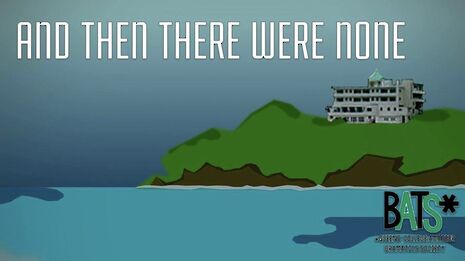Review: And Then There Were None
Vanessa Braganza was impressed by this ‘very clever adaptation of an Agatha Christie classic’

Ten people trapped on an isolated island slowly reach the limits of their sanity, as a mysterious and ominous force finishes them off one by one. I’m not talking about exam term at the University Library, but the recent student production of And Then There Were None.
Based on Agatha Christie’s chilling novel of the same title, this production combines a traditional whodunit with psychological complexity and a thrilling final redaction to the original story. The play follows ten characters invited to a house on an island by an unknown Mr. Owen, who soon find themselves accused of various murders and killed one by one in ways derived from the classic nursery rhyme ‘Ten Little Soldier Boys.’
Director Molly Semple has chosen to remain largely faithful to the dialogue of the 1943 stage adaptation, and the atmosphere of the production (complete during the interval and before the show with 1930s jazz crooning away in the background) is thus strongly evocative of classic staged mysteries like the West End’s The Mousetrap.
“Despite its ostensible faithfulness to a traditional whodunit, the production, sometimes humorously, parodies the genre”
Despite its ostensible faithfulness to a traditional whodunit, the production, sometimes humorously, parodies the genre. The ten actors caricature their respective characters in a way that reminds one fondly of childhood games of Cluedo, and foregrounds the often dated stereotypes of characters in early twentieth century murder mysteries.
Like a 70s’ or 80s’ sitcom, one learns to listen for catchphrases that define the characters. Ed Bankes is ‘wizard’ as the Cambridge toff Marston, whose eagerness for adventure lands him in murderous straits rather quickly. Irrah Carver-Jones is dialectically convincing as Blore, the cockney copper masquerading under the pseudonymic insistence that “Davis. Davis is the name.”
Yuxi Chen brings some of the chills early in the play as the inflexibly moral and cruel spinster, Emily, and Henry Eaton-Mercer’s performance as Armstrong highlights the irony of the remarkably nervous nerves specialist.
While some of the early scenes tend to drag on and the actors flub their lines several times, the most thrilling performances are delivered by Thea Mead as Vera, and Eduoardo Strike as Judge Wargrave. The play climaxes as nine out of the ten are murdered by their mysterious host. At this point, Mead’s depiction of Vera’s psychological breakdown balances hair-raisingly with Wargrave’s terrifying reappearance (absent from the novel) and compulsion to kill.
The two play off each other beautifully in the final scene. The most tenuous, nuanced moment comes when Vera pleads her innocence to the Judge. In the house that Wargrave has turned into a court where perverse justice is executed, his bloodlust is momentarily suspended in consideration of her innocence.
Strike brilliantly depicts a flicker of doubt like a passing cloud over his countenance as he listens to Vera’s pleas, and the struggle within him is violently superseded by the physical struggle between the two characters. The moral dilemma presented at the end is brutally repossessed by the horror of a neck in a noose and a gun to a temple.
And Then There Were None delivers thrills, humour, and suspense – a very clever adaptation of an Agatha Christie classic
 Interviews / You don’t need to peak at Cambridge, says Robin Harding31 December 2025
Interviews / You don’t need to peak at Cambridge, says Robin Harding31 December 2025 Comment / What happened to men at Cambridge?31 December 2025
Comment / What happened to men at Cambridge?31 December 2025 News / Unions protest handling of redundancies at Epidemiology Unit30 December 2025
News / Unions protest handling of redundancies at Epidemiology Unit30 December 2025 News / Varsity’s biggest stories of 202531 December 2025
News / Varsity’s biggest stories of 202531 December 2025 News / Downing investigates ‘mysterious’ underground burial vault 29 December 2025
News / Downing investigates ‘mysterious’ underground burial vault 29 December 2025








